The art of happiness
- Published

A number of high-profile artists have come together to create a restorative environment in a London psychiatric ward.
Hidden away in south-west London is one of the most exclusive art galleries in the UK. Turner Prize winners and renowned fashion photographers are displaying their work for viewers at the Phoenix Unit - a secure psychiatric hospital in Tooting.
It's home to 18 residents with severe and enduring mental health problems who live there, on average, between one and three years as they recover and regain their independence.
For now, the interior walls are decorated with the same calming, yet chilly, colours throughout, with the quiet room and activity room looking very similar. But the artists are coming.
A new project - Hospital Rooms - has brought together 10 of Britain's most prolific contemporary artists, including photographer Nick Knight, who has previously collaborated with designer Alexander McQueen, to rejuvenate the space.
But for such a high-profile collection there is a drawback for the masses who might want to see it. "There's no access for the public - it's a secure ward," says Niamh White, art curator and co-founder of Hospital Rooms.
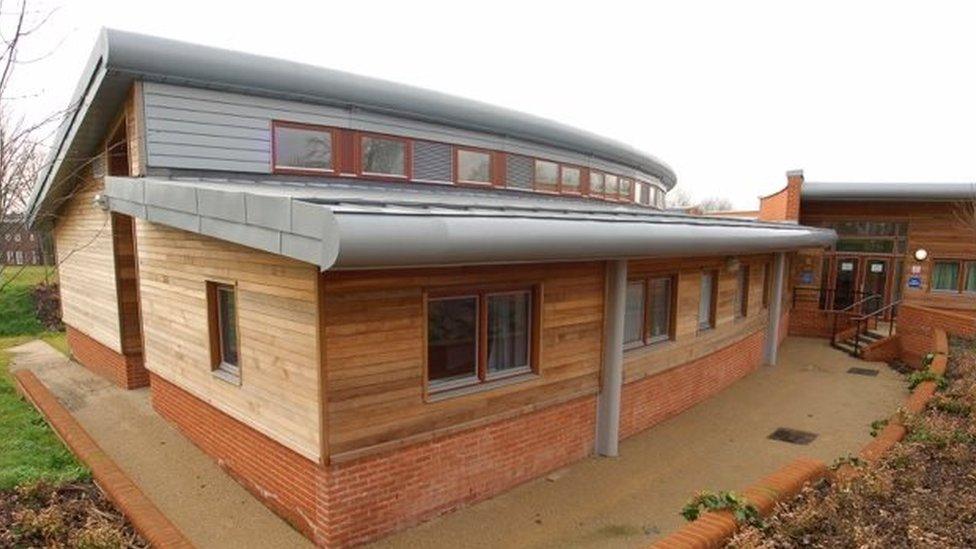
The Phoenix Unit was built in 2008 and is one of the more modern buildings on the hospital site
The idea began to take shape after White and her business partner, artist Tim A Shaw, visited friends in similar units.
"We found they were quite difficult spaces to be in," she says. "We work for the most part with affluent people in beautiful settings and we felt that our skills were transferable and we would be able to change these spaces and make them more comfortable."
Each of the 10 artists selected has been allocated a communal area to renovate, with residents and clinicians giving their suggestions on colours and potential designs.
Landscape architect Joh Bates took on the courtyard after the residents said how vital the space was. Bright orange furniture now invites them outside, with a newly built pagoda offering shelter for them to sit among the freshly potted plants even if it rains.
Marsha, one of the residents, says: "The garden is brilliant because it is tranquil, brand new and the red seats make me feel cheerful."
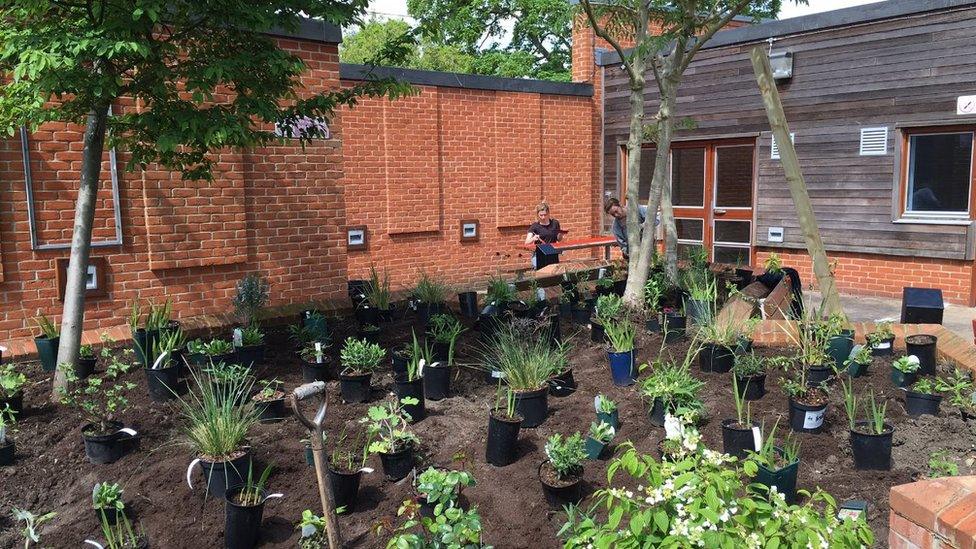
The residents were really keen to have a garden area which they could use in all weathers
For the lounge, photographer Knight selected two of his most striking prints which previously had never been seen together.
One of the images, Lily, shows a model spinning in haute couture with pink powder flying up around her (pictured top). Fresh from being featured in the National Portrait Gallery's Vogue 100 exhibition, the secure unit will become its permanent home.
White and Shaw hope to tackle things like boredom in the unit by creating immersive environments and improving on the kind of paintings she says are often chosen by HR departments. "Sometimes artwork can be selected at the end of the day, whereas we think of it as a field of experts in colour theory and creativity."
The London architecture and design collective known as Assemble are best known for winning the Turner Prize in 2015 after overhauling 10 derelict houses in Liverpool. Their contribution is an ornamental notice board made from hardwood. A screen print sign will state Our Meaningful Day encouraging the residents to get involved in the activities on offer at the centre.
White and Shaw started meeting the residents and scoping out the space in October. Artists have been sponsored by, among others, Arts Council England.
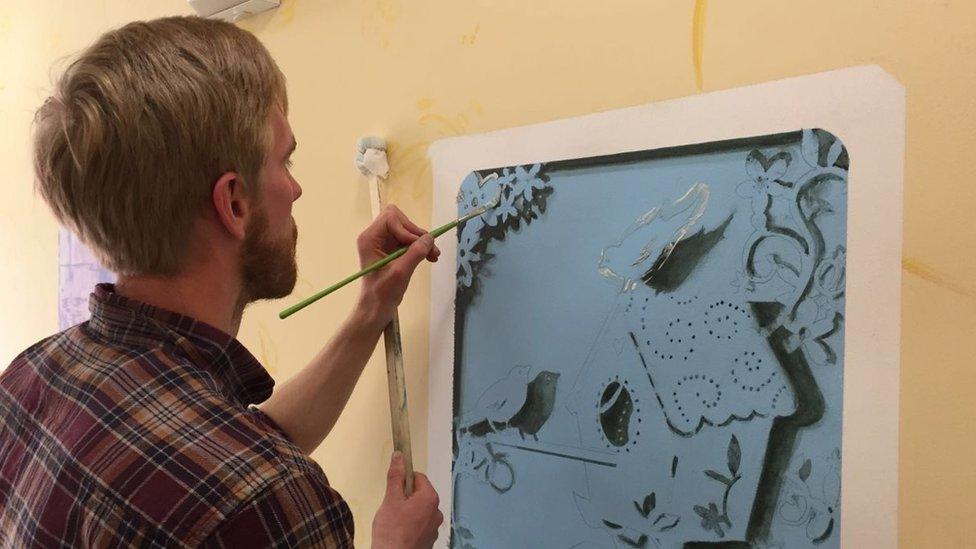
Michael O'Reily is painting 12 separate images onto the wall as part of the design
Michael O'Reilly, an apprentice scene painter at the Royal Opera House, chose the quiet room as his canvas.
"The audience is limited, but I like that, it might be ignored, looked at or just in the background but at least it's on the wall whereas paintings in a show are always temporary. It's private but permanent."
O'Reilly says he has learnt a lot more about mental health since being there but at first wasn't sure what to say. Now he regularly chats with the residents who suggest colours and ideas to him as he works.
Many residents were keen to have a space for their own artwork which led Tim A Shaw to create the Phoenix Gallery within the dining area.
Using colour schemes from other museums and galleries he painted a series of squares, rectangles and circles onto the walls to act as frames for the artwork so it doesn't require display cases, complying with NHS standards for the unit.
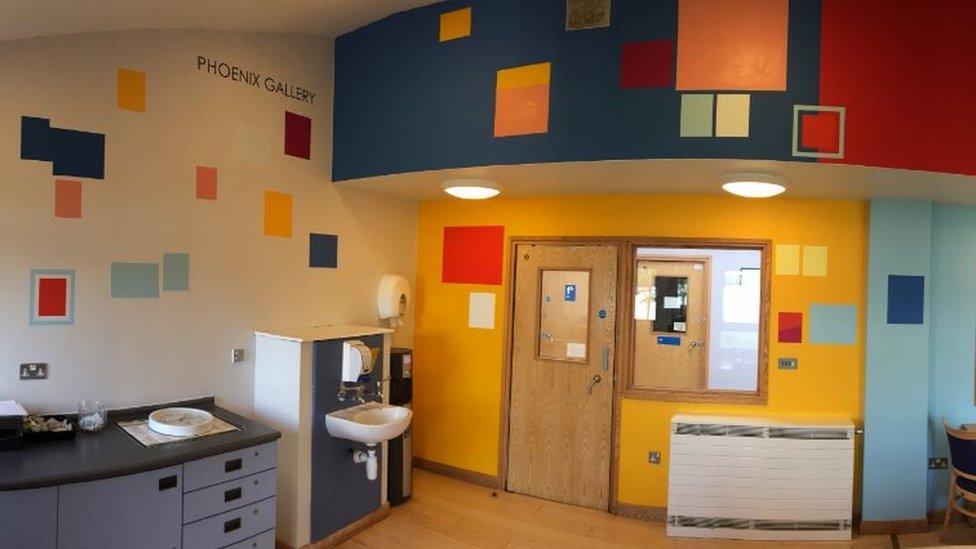
Tim A Shaw created a bright design in an area service users can also display their own work
Dr Emma Whicher, medical director of the trust, says the project is providing people with the opportunity to influence their environment and take part in an exclusive and privileged project regardless of their situation.
"The environment you're in has an impact on your well-being and your feelings on dignity and respect," she says. "Sometimes people with mental health problems experience quite a lot of stigma within the community and this project really values people and says how important it is that they get the wider experiences."
One of the service-users, Will, says: "I think the new design is changing the way we all live our lives on the ward. The garden has given us all a new way to start conversations with each other and things already seem so much better."
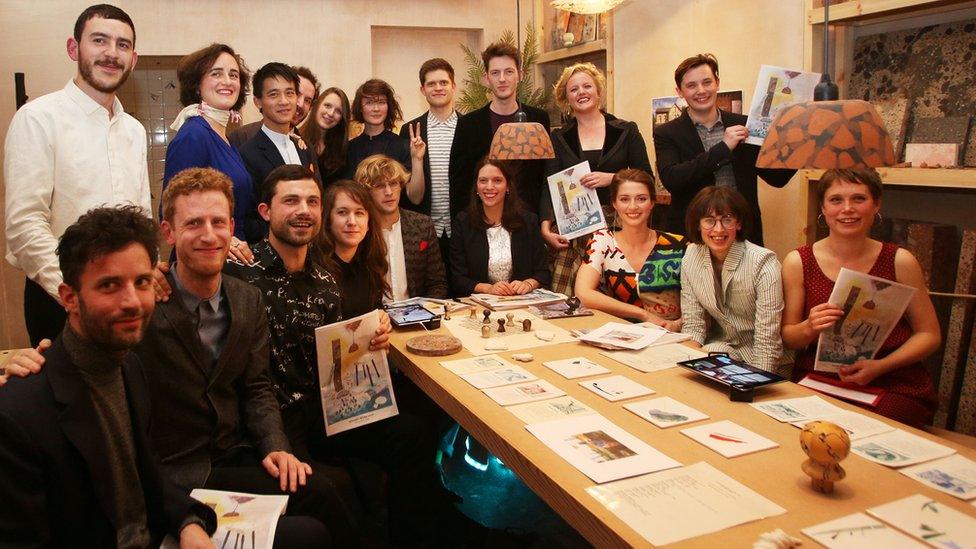
Assemble is a London-based architecture and design collective
- Published11 May 2016

- Published8 December 2015
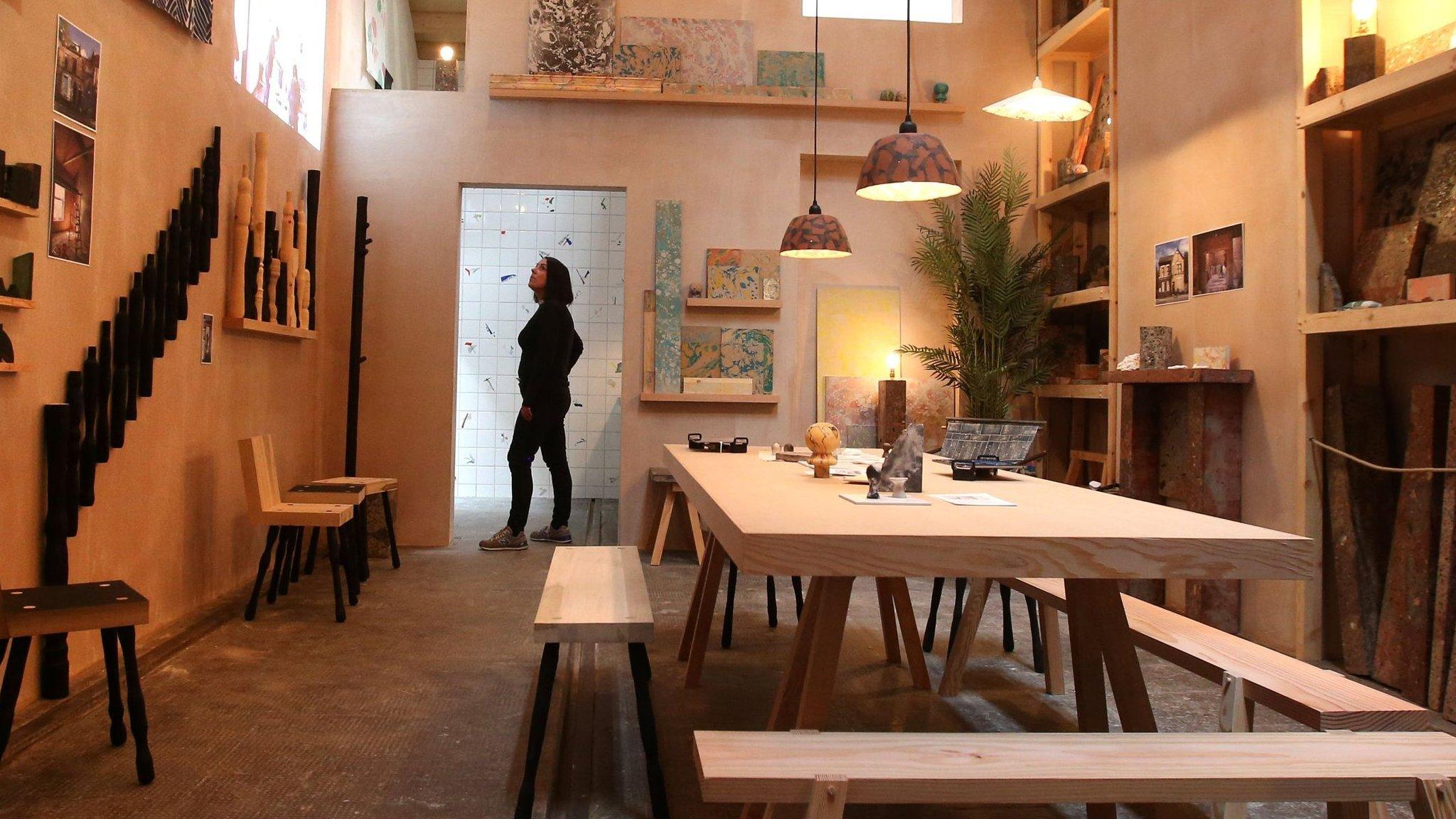
- Published7 December 2015
